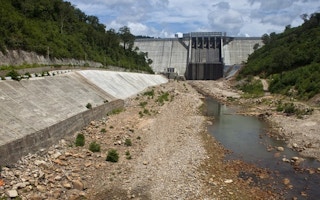The construction of the Kamchay Dam in Cambodia, though beneficial to urban areas, has not been so good for those who live close to the dam site in Kampot province, according to a study.
Inaugurated in December 2011, the 193-megawatt Kamchay Dam is the first major hydropower project in Cambodia, under a programme to ramp up hydroelectricity production.
A team of researchers from the University of London in the United Kingdom and the Cambodia Development Resource Institute based in Cambodia conducted the study on hydropower, social priorities and the rural-urban development divide, which was published online in Energy Policy (24 July).
The researchers interacted with the people from five villages whose livelihoods are affected by the construction of the dam. Though the dam has not displaced anyone, the team found its construction has substantially reduced the earnings of bamboo collectors and fruit sellers by limiting their access to forests.
After the dam came up, the number of tourists visiting the region also dropped by 75 per cent, slowing the local economy significantly.
In addition, as in many power projects, the electricity produced is supplied to far off places while the villagers in the vicinity are deprived of the power that is generated so close to them.
“Many social and environmental mitigation interventions are included in the environmental and social impact assessment of large dams, such as training, education, livelihood diversification, infrastructure development, and afforestation programmes. However, these measures are rarely implemented in practice, especially in developing countries,” says Giuseppina Siciliano, a research scholar at the University of London who participated in the study.
The researchers suggested three policy recommendations to make hydropower more socially viable:
- harmonise national and local priorities in all phases of dam construction, from design to implementation, monitoring and mitigation;
- conduct public consultations with all relevant stakeholders; and
- develop specific national energy policies and legislations on hydropower that include safeguard processes and open decision-making to cope with the many social and environmental challenges that large dams bring about.
“The published study is very valuable as an evaluation of the first large hydropower project in Cambodia and their findings should form the basis for improved development processes that are expected to come,” says Tor Haakon Bakken, a research scholar at the Norwegian University of Science and Technology and the Centre for Environmental Design of Renewable Energy in Norway, who did not participate in the study.
According to a report by Cambodia’s electricity authority, as of 2013, only 68 per cent of rural villages were electrified. The country’s energy mix is dominated by oil, which caters to about 90 per cent of total energy needs.
In 2013, Cambodia imported 2,282 gigawatt-hours of electricity from neighbouring countries. Cambodia is gearing up to exploit its hydropower potential of 4,347 megawatts.










